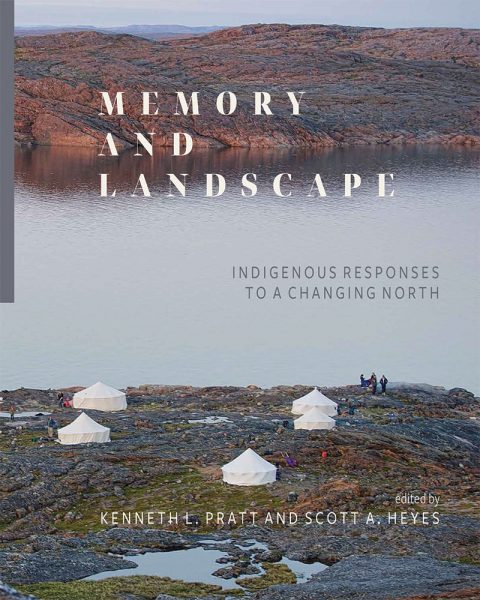Trail of Story, Traveller’s Path Reflections on Ethnoecology and Landscape
Leslie Main Johnson

Subjects: Geography and Landscape, Indigenous Studies
Imprint: AU Press
“Our identity, our sense of belonging, our understanding of being human, is all connected to our relationship with the land. And our relationship with these lands span millennia. Our grandfathers and grandmothers that came before us walked these same ridges, valleys, and trails. They fished the same lakes, streams, and rivers. They cherished memories carried in the pungent smell of the fall tundra, in wafts of spruce, cottonwood, and willow smoke. They ventured throughout these lands until their final rest. Our ancestors are literally part of this land. We are part of this land.” –Evon Peter
The North is changing at an unprecedented rate as industrial development and the climate crisis disrupt not only the environment but also long-standing relationships to the land and traditional means of livelihood. Memory and Landscape: Indigenous Responses to a Changing North explores the ways in which Indigenous peoples in the Arctic have adapted to challenging circumstances, including past cultural and environmental changes. In this beautifully illustrated volume, contributors document how Indigenous communities in Alaska, northern Canada, Greenland, and Siberia are seeking ways to maintain and strengthen their cultural identity while also embracing forces of disruption.
Indigenous and non-Indigenous contributors bring together oral history and scholarly research from disciplines such as linguistics, archaeology, and ethnohistory. With an emphasis on Indigenous place names, this volume illuminates how the land—and the memories that are inextricably tied to it—continue to define Indigenous identity. The perspectives presented here also serve to underscore the value of Indigenous knowledge and its essential place in future studies of the Arctic.
A rich and beautiful book that tackles issues of great importance for many Northern communities: land and dispossession, tradition and change, memory and loss. With an impressive array of eminent scholars who seek to foreground Indigenous voices, this volume addresses the interplay of colonial pressure and Indigenous peoples’ resilience through topics ranging from berry picking and house forms to ecological knowledge and place naming. A book for everyone who wants to understand the cultural pillars of changing social and natural environments in the North.”
Peter Schweitzer, Professor of Anthropology, University of Vienna
A fresh and welcome approach to documenting rapid climate change in the North. The volume succeeds in privileging both scholarly and Indigenous perspectives and will be useful and appealing to researchers and Northern peoples alike.”
Rachel Mason, senior cultural anthropologist, National Park Service, Alaska Region
This beautiful book smartly allies many means of communication, including photography, poems, testimonies, drawings, papers, and as many methodological and disciplinary approaches to please a large range of readers—as well as please the eye.”
Catherine Dussault, Études Inuit Studies
Memory and Landscape is a significant contribution for Arctic researchers and a great resource for anyone conducting community-partnered research in the North. The volume should also find a global readership in the field of heritage studies and climate change. The papers are well-written and illustrated with stunning photographs from contributors’ fieldwork. The editors and authors have ensured the volume is accessible to a broad audience, and the combination of theoretical insight and excellent case studies makes Memory and Landscape a great text for seminar classes.”
Matthew Walls, Alaska Journal of Anthropology
This work is licensed under a Creative Commons License (CC BY-NC-ND 4.0). It may be reproduced for non-commercial purposes, provided that the original author is credited.